Want to know how to sew leather like a pro?
Sewing leather is a practice as old as mankind putting a needle to thread.
It is one of those timeless skills that was once necessary for everyday life but has since been replaced by mass production. But that doesn’t mean it can’t still be useful, or even beautiful.
When it comes to sewing leather, there are a few things you need to keep in mind. Leather is a tougher fabric to work with than most, so you’ll need to take some extra care when handling it. The good news is that sewing leather by hand or machine is not as difficult as it may seem at first. With a little patience and practice, you’ll be stitching up leather like a pro in no time.
Regardless of the kind of sewing setup you have at home, you’ll need different tools for leather sewing than for working with standard thinner fabrics.
In this sewing leather guide, we’ll show you what you need to get started, and walk through the basics of sewing leather by hand – or by machine.
Let’s take it away…
Getting Started: Tools For Sewing Leather
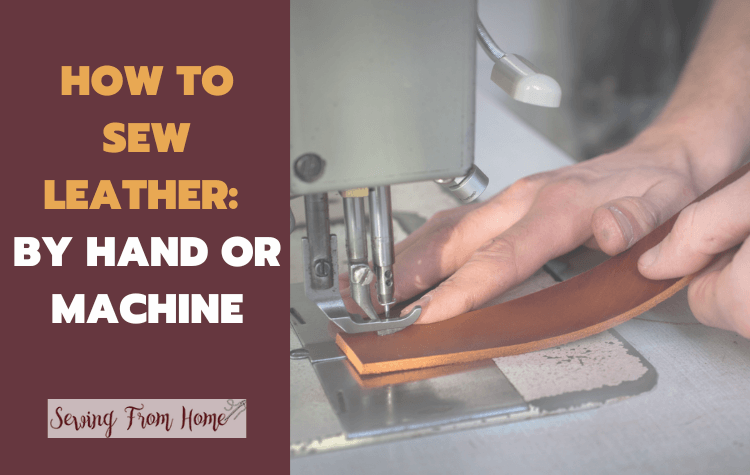
Before we get started, here are some of the sewing tools that you’ll find useful for working with leather.
- Durable ruler
- Leather shears
- Plastic cutting board
- Utility knife
- Craft knife
- Rotary cutter
- Rubber or wooden mallet
Hand Sewing Leather Tools
And for hand sewing leather…
- Awl or stitching chisels
- Blunt-tipped needle
Leather Sewing Machine Tools
If you decide to use a machine, you’ll need to make sure you have:
- Leather sewing machine needles
- A leather foot
- A sewing machine suitable for working with leather
You can check out our top rated leather sewing machines if you don’t already have one.
Models we’d recommend include the Janome HD3000 and the Singer 4423. Both are known as heavy duty workhorses — perfect for sewing leather.
What You Need to Know About Sewing Leather
Types of Leather, Prices, and Designs
Most leather that you work with will be undyed and unfinished.
In this state, you can dye it, form patterns in it by stamping it, brand it to burn an image into it, or do more elaborate things like a process called tooling.
Tooling involves cutting and stamping designs into the leather, then using positive and negative space to form designs. But please note – tooling is not for beginners. Working the leather in this manner needs to be done before finishing, as what protects treated leather from damage also prevents the easy melding of it.
The price of leather mainly varies based on superficial flaws. Things like bug bite scars, killing injuries, and discoloration reduce the price of leather. ‘Weight’ refers to the thickness of a leather rather than the actual weight.
Different types of leather will require different kinds of tanning. For instance, buffalo leather is really tough.
Some leathers are tanned by a process called ‘chrome,’ because chromium is used in the procedure.
A leather can also be called ‘chromed’ even if it was not finished by this particular process, simply because it’s the most common way of doing this. For instance, we still call it ‘hanging up a phone’ even though new phones are no longer made with cords to hang.
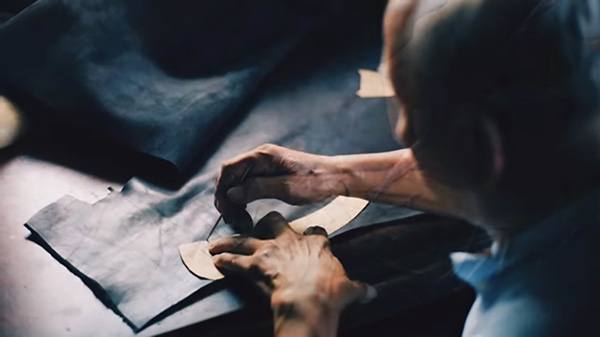
Where to Get Your Leather Supplies
To get a whole piece of new leather, you will either need to go to a leather supply store or find a storeplace online.
“Upcycling,” a term for reusing materials, can be much cheaper than buying fresh leather, as leather needs to be bought by the piece rather than cut to the size you need at the store, as cloth is. You can find leather items to upcycle at places such as flea markets and thrift stores.
Upholstery shops may also have surplus they can sell to you. Auto upholstery shops will have shades of black, gray, and cream, and furniture upholstery shops will have a large assortment of colors.
Some leather specialty shops will let you try out stamps, dyes, and other tools before you purchase them.
Where to Buy Leather Supplies Online
There are a couple of stores that we can recommend for buying leather supplies:
Weaver Leather Supply
https://www.weaverleathersupply.com
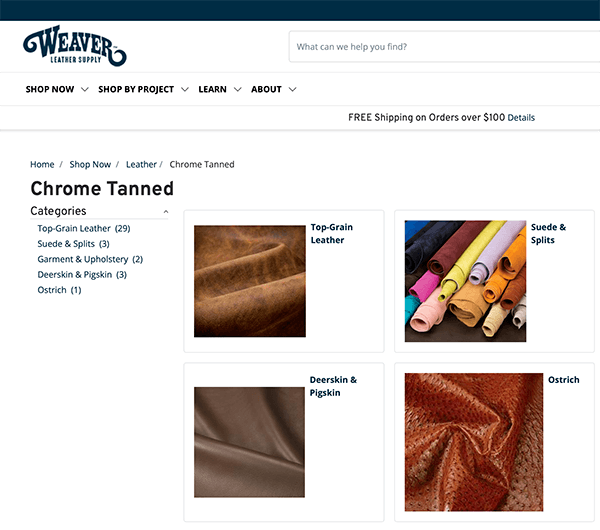
The Weaver Leather Supply is one of the best manufacturers of quality leather and nylon products. Whether your next project is a bag, belt or bracelet, you can find a wide range of leather supplies at decent prices in their online store.
The Leather Guy
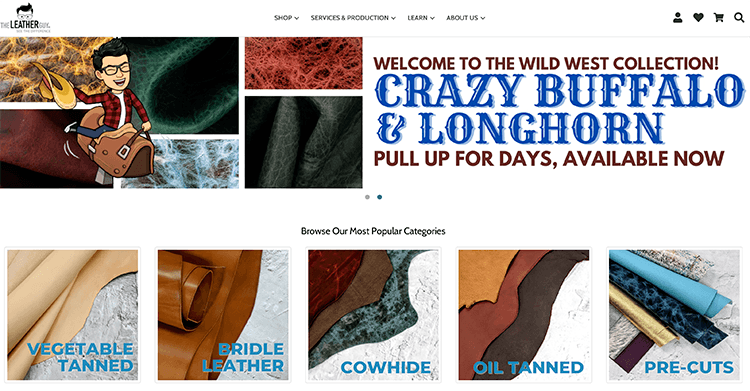
The Leather Guy boasts an eclectic mix of leather fabrics to choose from, including: bison, buffalo, cowhide, deerskin and elk.
If you’re interested in any kind of leathercraft, you’ll love the variety of supplies stocked here.
How to Sew Leather
Preparation
Like any sewing project, measuring and making guidelines is the standard way to work.
For leather, chalk will be far more effective than a pen as a marking tool. Chalk can be sharpened like a pencil to get finer lines.
Especially when beginning, it is better to leave large margins so that you do not lose your entire project to a bad edge or underestimation.
A sharp knife is essential for leatherworking. Either a knife that you can sharpen or replaceable blades in a utility knife will go a long way in pursuing this craft.
Avoid snap-off blades, as you are working with a very firm material that may turn this convenience into a safety hazard.
Dry leather is hard to work with and so you will need to add moisture back to it before you start. This is called casing. This is done before stamping, dying, branding, or tooling.
Casing leather is fairly simple: spray it with water evenly, flipping it to check if it has gone through to the other side. When water starts soaking into the other side, it is time to stop casing.
It is important to case your entire piece of leather even if you are only working with a small section. This is so discoloration and uneven surfaces do not happen. Wet molding and detail work will require more water than most casing.
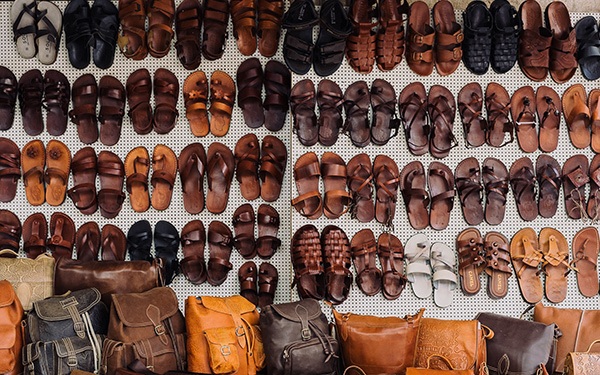
How to Hand Sew Leather
You can sew leather either by hand or by machine.
Sewing by hand is recommended for beginners, as it is easy to make errors that will completely ruin the piece if you try to sew leather by machine, especially if you have an inexpensive standard sewing machine.
A specialized leather sewing machine can be quite expensive, and some sophisticated leather projects cannot be sewn without one.
If you sew your leather by hand, you will need to punch holes in the leather before you run the thread through it.
These holes will have to be precisely lined up. You can purchase stitching chisels to make accurately lined stitching holes easily, or purchase a stitching wheel to mark where your stitches should go and then punch the holes with an awl.
It is important to make sure the awl does not go in at an angle, but goes in exactly perpendicular to the pieces of leather.
If your budget is limited, you can mark evenly separated stitch holes using a ruler as a guide, or use the tines of a fork, and punch the holes with a hammer and small nail or an awl.
You cannot use pins to hold pieces of leather together when you punch your holes and sew, as you would with cloth, because any hole poked in leather will never go away.
Many people choose to hold leather pieces together with a glue that does not become hard and sharp when it dries, such as leather glue or rubber cement.
When all your holes have been punched, you are ready to stitch. You should use a blunt-tipped needle for sewing leather by hand.
You may need to use pliers to pull the needle through the holes. When you have finished a seam, turn around and backstitch for two stitches, and secure the seam by either tying a knot or carefully melting the thread together with a flame (if you are using synthetic thread).
Here’s a great video on the process of hand-stitching leather:
Using a Leather Sewing Machine
If you sew your leather by machine, you need to use needles and a sewing machine foot that are meant for leather. Have extra needles on hand, as the process of sewing leather will dull a needle very quickly.
If you are using a standard home sewing machine, make sure that it’s heavy duty enough to handle the material and thread that you are using. Make a practice seam on a small piece of scrap leather to test whether your machine works with the leather.
Some types of leather, especially thicker weights, will need to be sewn with a specialized leather sewing machine.
Again, you cannot use pins in leather. When sewing by machine, many people use binder clips or double-sided tape to hold the leather pieces in place for sewing. Do not put the double-sided tape under the place where you plan for your stitches to go.
Go very slowly and carefully while sewing, as you cannot undo and redo a stitch without putting permanent holes in the leather. Use a long stitch length – at least ⅛ of an inch.
Do not backstitch at the end of a seam when sewing leather by machine; simply stop sewing and tie the thread in a knot.
Our Thoughts on Learning to Sew Leather
Learning how to sew leather can be a very rewarding and fun hobby, and you can achieve amazing results using leather you upcycled from an old coat from the thrift store and tools you already have in your home.
You do not need to shell out money for an expensive leather sewing machine to enjoy this craft, although this is definitely the next step if you want to professionalize your work.
If you become proficient at leatherworking, you can create anything from glasses cases to wallets to bags to your own leather garments and shoes.
Your only limit is your imagination!
What do you think — will you use a leather sewing machine or stick to hand sewing?
